Last updated on February 13, 2024
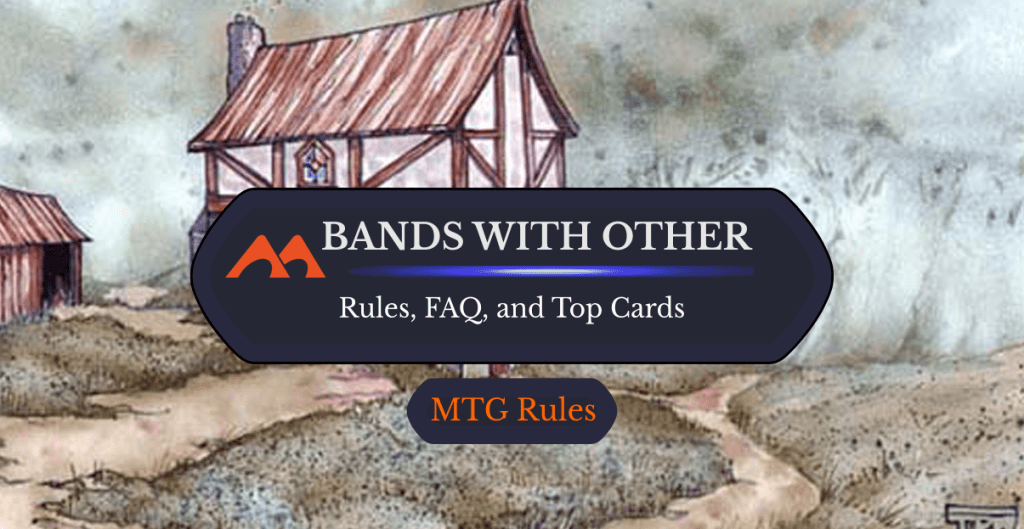
Adventurers' Guildhouse | Illustration by Tom Wanerstrand
Magic celebrated its 30th anniversary last year, and milestones like that are always a great time to reflect on the history of the game. Sports people often fill their off-seasons with one of my favorite pastimes: Remembering Some Guys. Do “Magic boomers” get together at happy hour to Remember Some Cards?
But not everything that’s been turned into card stock has been a winner. Some mechanics and design ideas become all-stars, coming back again and again with new takes and iterations. Others are relics of their time, left to be dug up by MTG archaeologists who weren’t around to experience them.
Look, I don’t have a musical pun for this one. I don’t even have a witty segue. “Bands with other” just doesn’t roll off the tongue, but it’s today’s topic. Whether you’re here to Remember Some Cards or learn about something you missed from ages past, join me as we uncover this long-dead mechanic!
(Disclaimer: I’m no judge, have you read my bio? I can point you to rule 702.22 in the Comprehensive Rules, which deals with banding. Cheers!)
How Does Bands with Other Work?

Old Fogey | Illustration by Douglas Shuler
Bands with other allows you to form “bands” when you declare attackers. Creatures that have bands with other can form a band with other attacking creatures of the specified quality. That band attacks together and is blocked together.
The band you’ve formed lasts until the end of combat, even if another effect removes the bands with other ability. You can form as many bands as you’re able, but one creature can only be a member of one band.
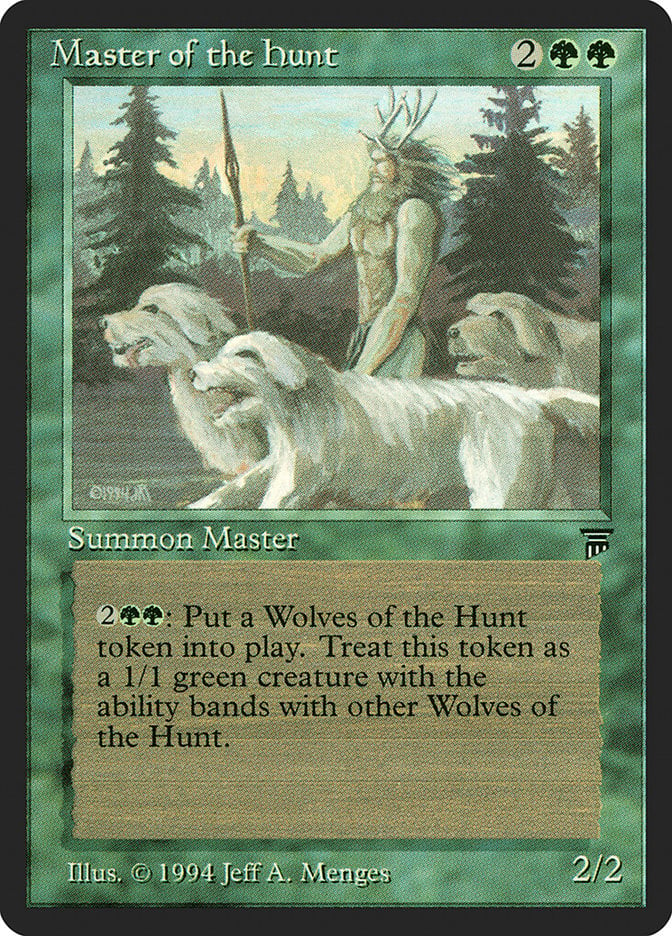
For example, Master of the Hunt has the ability to create a 1/1 Wolves of the Hunt token with the ability “bands with other Wolves of the Hunt.” In this case, the “quality” is “Wolves of the Hunt,” which limits the token to forming bands with other Wolves of the Hunt tokens. With me so far?
If a creature can block any one creature in a band, then it can block the entire band. Sticking to the Wolves tokens, say you have three of them on the board and grant one of them flying until the end of the turn. If you attack with them as a band, then your opponent doesn’t need a flier or reacher to block the band, just a creature that can block your non-flier Wolves.
Combat damage is tricky. If you’re attacking with a bands with other creature, you get to assign how the combat damage from the blocking creatures is distributed. If you’re blocking with a creature with bands with other and one or more creatures with the stated quality, you assign how the attacking creature deals combat damage between your bands with other creature and the other blockers you have that could join its band.
I think we need another example. Let’s go back to those Wolves of the Hunt tokens and snag some vanilla creatures for easy scenarios:
1. You declare attackers with three Wolves of the Hunt tokens attacking as a band. Your opponent blocks the band with Savannah Lions. Your opponent chooses how the total three combat damage is assigned to its 1-toughness Lions. You choose how the two combat damage is assigned between your three Wolves.
Result: Savannah Lions and two of your tokens die, leaving one Wolves of the Hunt token on the board.
2. Your opponent declares attackers with Leatherback Baloth, attacking alone. You block with five Wolves of the Hunt tokens. You choose how to assign the five damage dealt to Leatherback Baloth by your Wolves. You also choose how to assign the four damage dealt by the Baloth to your Wolves.
Result: Four dead Wolves of the Hunt tokens, one dead Leatherback Baloth, and one Wolves with an epic story to tell to mask the survivor’s guilt.
Think that was rough? Just think, before 2010 the mechanic was limited to only working with other creatures with the same bands with other ability. Yikes!
The History of Bands with Other in MTG
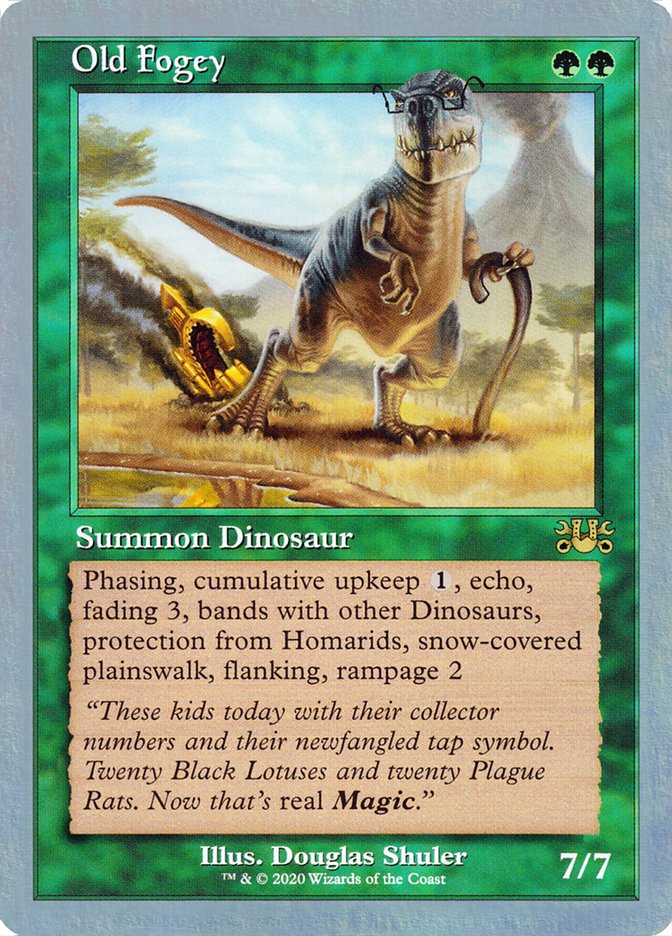
While banding has its roots as far back as Alpha, bands with others has its dawn and dusk in Legends. Aside from a pair of Un-set appearances by Old Fogey, the only bands with other cards come from Legends.

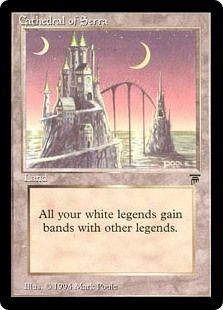
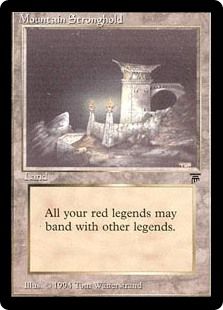
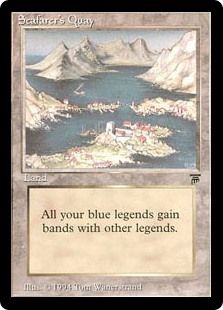

There’s a set of banding lands, which grant “bands with other legendary” to creatures of a specific color. There’s Adventurers' Guildhouse for green, Cathedral of Serra for white, Mountain Stronghold for red, Seafarer's Quay for blue, and Unholy Citadel for black.
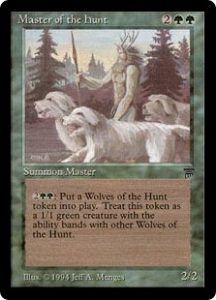
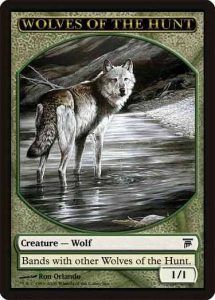
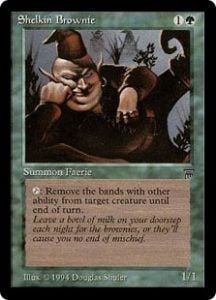
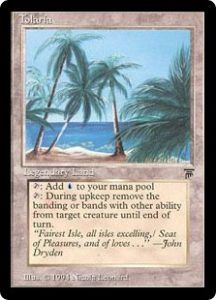
I mentioned Master of the Hunt, a green creature that can bring out Wolves of the Hunt tokens that can band together. Legends also gave us Shelkin Brownie, an ouphe that can tap to strip bands with other abilities from another creature until the end of the turn. Tolaria is a land with the same ability, but you can only activate it on your upkeep.
You’ve made it this far. You saw how convoluted How Does Bands with Other Work? was. Are you surprised it’s an 11 on the Storm Scale? Bands with other has a short history, and it’s pretty safe to say its future is nonexistent.
What’s the Difference Between Bands with Other and Banding?
Bands with other is a variant of banding (or, as Mark Rosewater described it, its stepbrother).
“Banding” allows all banding creatures and one non-banding creature to attack and block together as a band. “Bands with other” works similarly, except it restricts that band to only creatures that have the specified quality.
Gallery and List of Bands with Other Cards
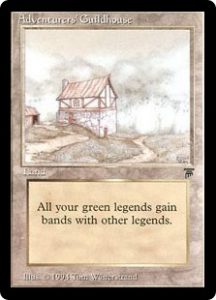
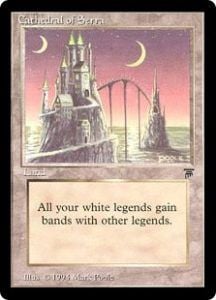

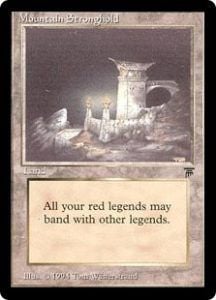

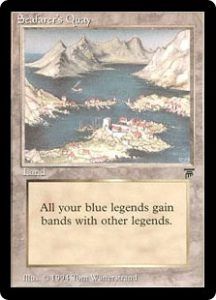



- Adventurers' Guildhouse
- Cathedral of Serra
- Master of the Hunt
- Mountain Stronghold
- Old Fogey
- Seafarer's Quay
- Shelkin Brownie
- Tolaria
- Unholy Citadel
Best Bands with Other Cards
#3. Old Fogey

Old Fogey may be from Unhinged (and reprinted in Unsanctioned), but it’s the only creature ever printed that has the bands with other ability built-in, with dinosaurs being the stated quality. I’ve hinted at my appreciation for dinosaurs elsewhere, but this old-timer’s specs and cane really make me hope he has a good day.
#2. Banding Lands





The banding lands may be the best among the cards that feature bands with other rules text, but that doesn’t mean they’re all that great.
These are lands, but they don’t tap for any mana. They don’t tap for anything. They only grant “bands with other legendary creatures” to your specifically-colored legends.
#1. Master of the Hunt

See, I’d be tempted to call Master of the Hunt’s tokens good boys, but they really just seem like jerks. “Wolves of the Hunt,” how high and mighty. Oh, you can’t bands with other wolves, just your brothers? Is it that your Master doesn’t let you, or are you just stuck up, snotty brats?
Master of the Hunt doesn’t even see play in wolves decks. Not surprising, because its synergies are one-way. You can bring out tokens, but it’s expensive and neither they nor their Master do anything for your other wolves. Imagine being able to band these with your Kessig Cagebreakers wolves. Alas, no.
Also, have you seen how much this guy is worth? It’s a $20 spread between CardKingdom and TCGPlayer, but the upper limit hovers around an eye-popping $70. I suspect that’s because of the age of the set.
Wrap Up
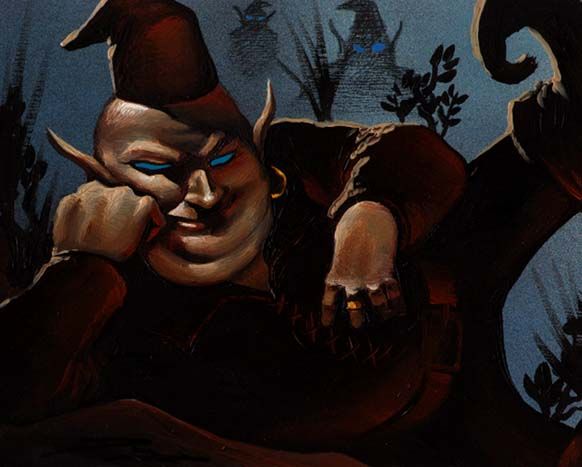
Shelkin Brownie | Illustration by Douglas Shuler
It’s curtains for bands with other (nailed it)!
I hope you enjoyed this trip through the Magic archives as we looked at something that is never, ever, doubtless, guaranteed, never coming back. And it was hardly here to begin with…
What are your thoughts or memories of bands with other? What other old and buried mechanics would you like us to cover? Are there any other “Remember Some Cards” topics you’d like to read about? Let me know in the comments below or over on the Draftsim Discord.
Thanks for reading, and I’ll see ya later!
Note: this post contains affiliate links. If you use these links to make a purchase, you’ll help Draftsim continue to provide awesome free articles and apps.
Follow Draftsim for awesome articles and set updates: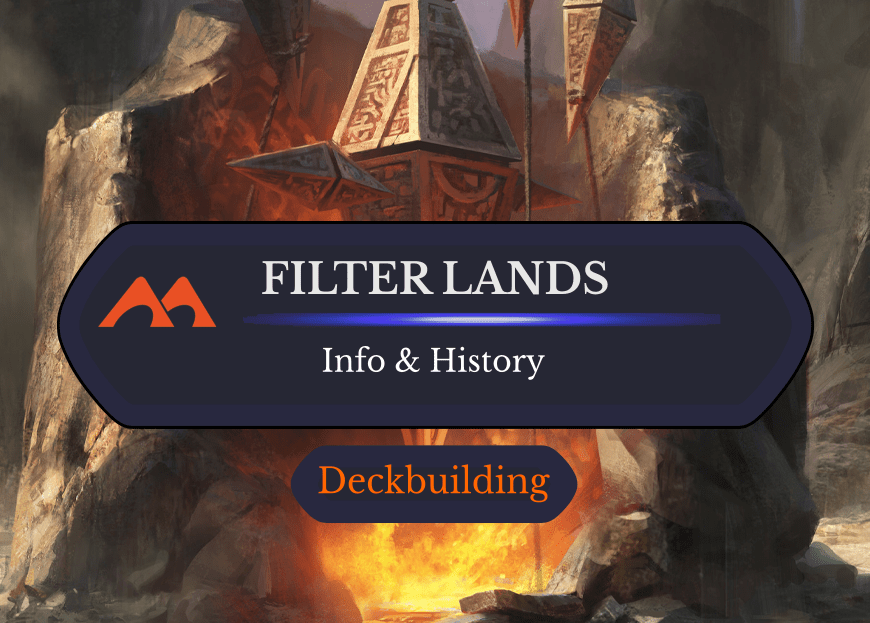
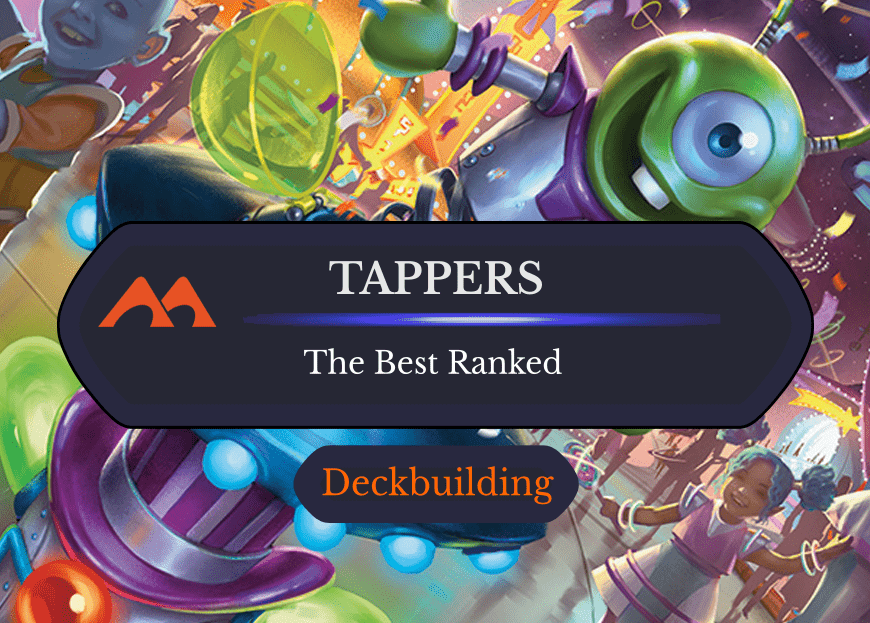
Add Comment